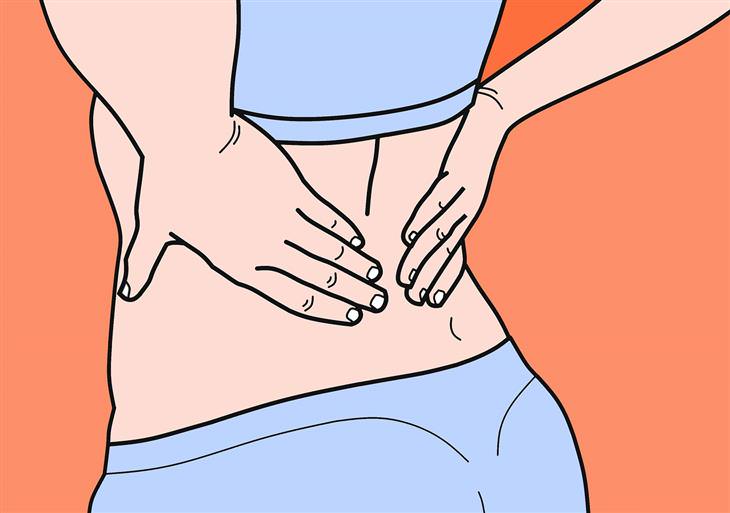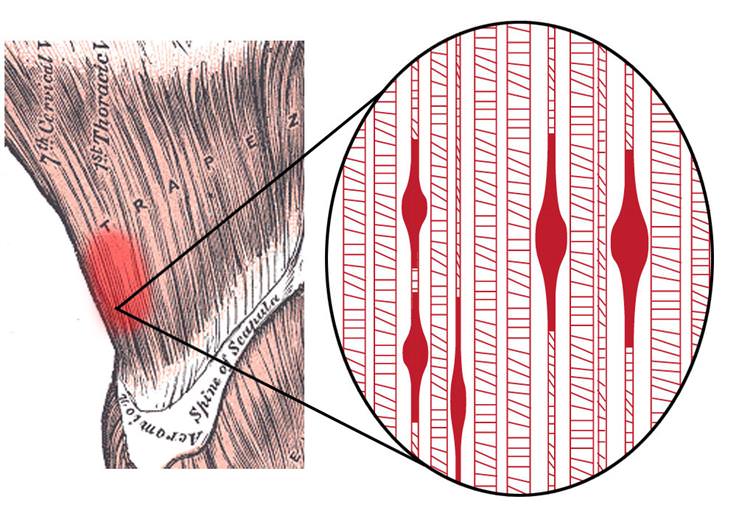
I don’t think there’s a person in the world who hasn't woken up with back or neck pain that restricts movement or radiates to other places, and often the same pain is caused due to trigger points. If you’ve never heard of this phrase, you should know that Trigger Points are “knots in muscles which are sensitive spots of soft tissue.”
Trigger points are microscopic and are most often formed in the back and neck, but also in the arms or legs. While you might think there’s nothing you can do about them, know that with a few self-massage tips you’ll get those kinks right out. So how do you identify trigger points and how should you massage them? Here's all you need to know about self-massage to handle painful trigger points.

Dr. Janet Travell, who has devoted her career to studying muscle connections, says that most of the pain we experience at trigger points does not actually indicate any problem with muscle tissue, and in fact, massage simply helps to change the body's response to the annoying sensation in the area.
Contrary to this, there are experts who argue that massage does help release microscopic bonds created by the muscle fibers, but they can’t explain how it actually helps - does massage release the bonds like kneading a lumpy mass until it becomes smooth, or maybe massage helps the muscles release accumulated toxins, what helps it become smooth again. What they do know is that massage really helps to alleviate pain and even prevent its return, and therefore, it’s important to know how to correctly perform self-massage.
1. Place your fingers on the painful area and gently press it - if the area hurts, it may be a trigger point and you should proceed to the next step. If not, it may be sore due to pain radiating to it from another area.
2. To make sure that the pain is related to the muscles and not to the layers of the skin, try to grab the skin with your thumb and index finger and pull it - if the pressure or pull is painful, this is a sign that this isn’t a trigger point, but a skin-related problem such as a pimple.
3. Press deeply on the painful area, massage the point slightly and try to feel the muscles themselves. If there is pain, it may be a trigger point, but note that sometimes in order to feel the pain, you have to press hard to reach the deep layers of the muscles.
4. Move your fingers vertically in the direction to which the muscle fibers turn. If all is well, you should feel that the muscles are smooth, but if it is a trigger point, you will feel a thick bulge in a muscle that feels somewhat like a tense guitar string - that point in the muscle should be sensitive to the touch.

You can massage the trigger point with your fingers, fists, elbows, a tennis ball, or any other massage tools as long as you can control its exact position. You can put pressure directly on the trigger point and massage it in circular movements or massage it with forward-backward movements. Any form of massage will help release the trigger point, but the most effective form of massage is parallel to the muscle fibers.
When you massage your body, you "talk" to the nervous system, so you have to make sure it is done in the right tone. This "conversation" should be friendly, supportive and helpful, and not loud and coarse, so avoid putting too much pressure on your muscles. Apply pressure that makes you feel pain, but doesn’t make you flinch or clench your teeth.
If we try to quantify the pain on a scale of 1 to 10, with 1 being painless and 10 being unbearable pain, you should aim to feel pain at about 4-7, more towards 4. The massage should allow you to feel calm and relieved, like a blessing which has finally come after you’ve suffered such a long time - it will hurt a little, but it will be a good pain. If you are clenching your teeth, the pain isn’t good.
You should massage the trigger point for about 30 seconds, depending on how you feel. The area can be massaged for 5 minutes or more if desired, as there is no time limit for a trigger massage, but 30 seconds should be enough to relieve most of the pain from trigger points. As long as you don’t experience any negative reaction from your body due to the massage, you should massage the trigger point two to six times a day for several days until the pain disappears.
